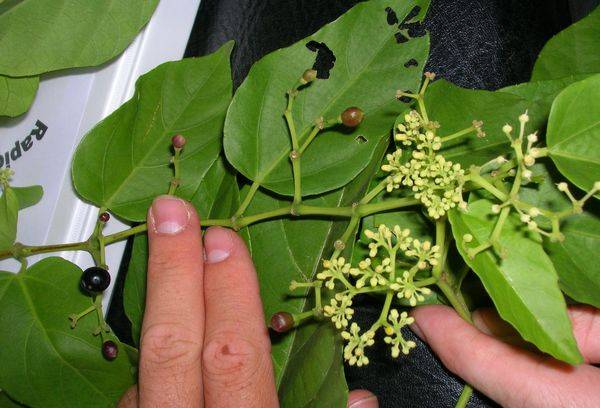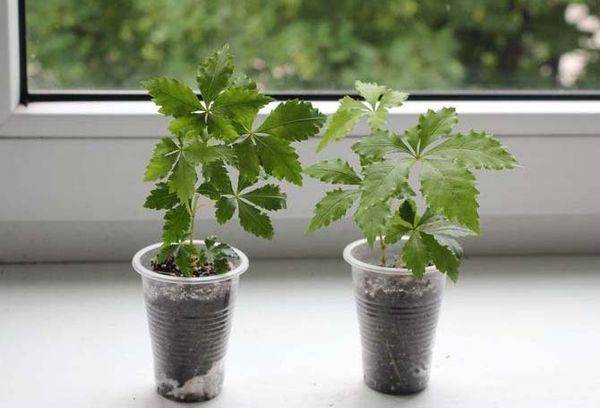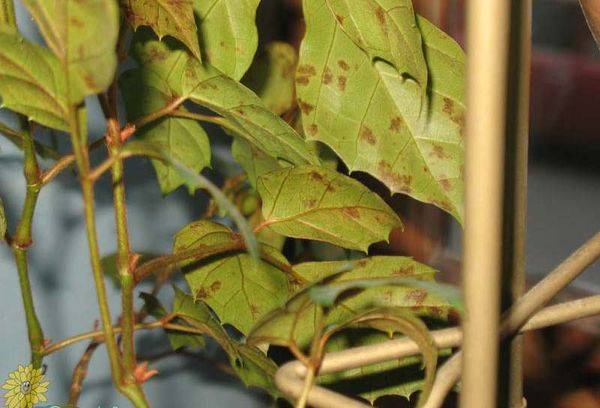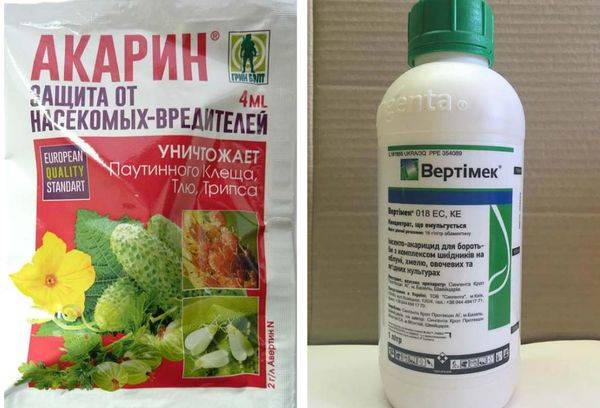How to properly care for cissus at home
Content:
Among the unpretentious indoor flowers, the graceful bindweed with a thick crown and beautiful leaves stands out. Many have already guessed that this is a homemade grape, cissus: caring for it is absolutely simple, and the appearance of the plant will not leave anyone indifferent.
Description
Cissus is a climbing evergreen ornamental vine that belongs to the grape family. Due to the similarity of the leaves, the flower is often called birch or homemade grapes.
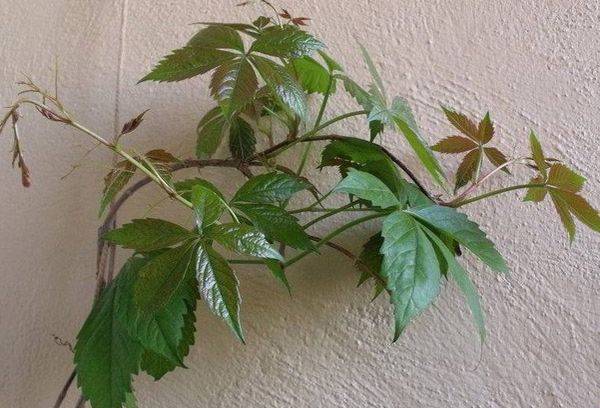
Under natural conditions, Cissus is distributed in the tropics and subtropics of Australia and Africa. Thanks to the beautiful carved leaves, forming a voluminous crown and beautifully flowing from the pot, the flower has gained popularity in indoor floriculture. The plant will decorate a balcony or room in the house, office, or public space.
Cissus shoots sometimes reach a length of 3.5 meters, while the root system of the plant is compact. Young stems are flexible, but as they mature they become woody, covered with a rough gray bark, which cracks and peels off over time.
Tendrils and petiolate leaves are located at the internodes of the stem.Often at the ends of the tendrils there is an expansion in the shape of a circle; the plant uses a similar device as suction cups in order to cling to the surface.
The leaves are arranged alternately and have a palmate, lobed or solid blade with a glossy surface. The color of the crown is bright, green, monochromatic. Rarely, but still there are cissus plants with variegated leaves.
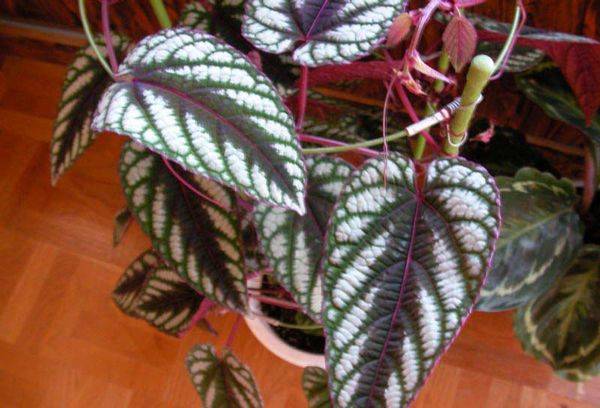
Cissus variegated (discolor)
At home, the plant blooms in exceptional cases, but this is a normal option and should not cause alarm. Small, inconspicuous flowers cannot compete with the spectacular appearance of the plant's foliage.
Kinds
Cissus is represented by a huge number of varieties, about 350 of them, but only a few of them are grown indoors. The most popular plant species among gardeners are:
- Cissus rhombifolia - loves shade, it must be grown on a support, shoots grow up to one and a half meters long.
- Cissus variegated (discolor) is the most beautiful view. The leaves are green with a purple tint; the plant sheds them in the winter. The surface of the sheet plates is glossy. Plants of this species are very demanding on the temperature and humidity in the room.
- Antarctic cissus is a vine growing up to two meters long. The shape of the leaf blades is ovoid, with serrations along the edges. The plant blooms with small green flowers and forms completely edible fruits that taste like grapes.
- Cissus quadrangularis has a very unusual appearance due to its dense, tetrahedral shoots; in appearance the plant resembles a cactus. Liana branches can reach a length of 1.5 m.
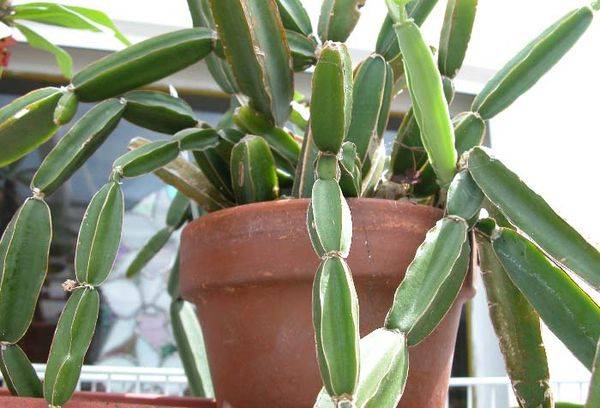
Cissus quadrangularis
Illumination and temperature conditions
Cissus is a very unpretentious plant and will grow in almost any conditions: darkness, heat, coolness, excess light. The flower does not tolerate drafts and sudden changes in conditions. Basic care for indoor birch trees comes down to proper replanting and watering.
Cissus will grow well on the windowsill of any window, as well as at a considerable distance from sources of natural light. The only thing the plant cannot tolerate is bright, direct sunlight. The ideal option for growing is diffused light.
Antarctic and multi-colored cissus develop excellently only in a shaded place and do not tolerate direct sunlight very well. For these types, placement near windows facing east or west would be ideal.
Rhombolifolia, on the contrary, is very light-loving, and the best location for it is next to a south-facing window. The flower will be comfortable on the balcony, but the plant should be protected from the wind and direct rays of the sun.
In winter, the ideal temperature for cissus is in the range from +14 to +16˚ C, in the summer months - from +18 to +26 degrees. The plant perfectly adapts to the gradual change of heat to coolness or heat; in winter it can withstand cold up to +10, and in summer - heat up to +30˚ C. However, sudden changes will harm the flower.
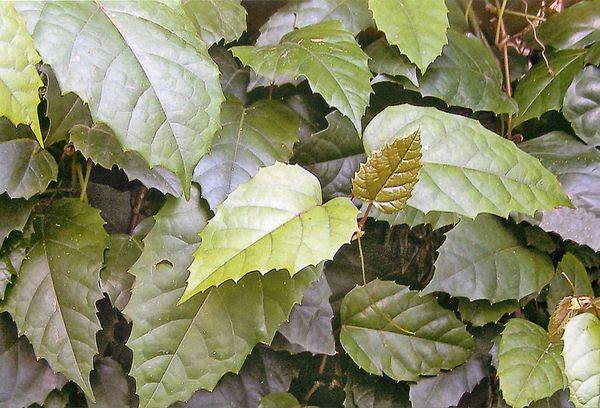
Antarctic cissus
Humidity and watering
Young cissus should be sprayed regularly. Adult plants will not refuse periodic foliar moisture in the summer months, although they may well grow without such an event.In autumn, you cannot spray cissus; in winter, you need to shower the leaves from time to time (once a month) to wash off the dust that has accumulated on them.
The plant has a large number of leaves, and therefore in the warm season it can evaporate a lot of moisture. Therefore, the flower needs abundant watering with exclusively soft water and spraying. In winter, excess moisture harms cissus - root rot appears, the plant stops growing and withers. During the winter months, watering should be minimal.
The earthen clod should not be allowed to dry out and moisture should not stagnate in the pan; between waterings, the top layer of the substrate (about 1.5 cm) should have time to dry.
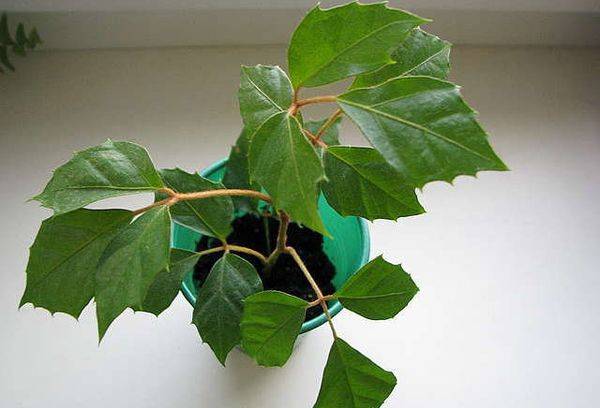
Cissus rhombifolia
Soil and fertilizing
Cissus is undemanding when it comes to soil, but optimal options still exist. For example, a mixture of leaf soil, turf soil, humus, peat and sand is perfect; all components must be taken in equal quantities. The ideal soil reaction is slightly acidic or neutral.
When choosing the size of the pot, you should take into account the age of the plant and the degree of development of the roots. For young seedlings, the optimal diameter of the container is approximately 9 cm. As the plant grows, with each transplant, the size of the pot should increase. The ratio of the diameter and height of the flowerpot is standard. Cissus is best planted in hanging pots with support to which the shoots will cling as they grow.
Any composition with a high nitrogen content used to feed indoor flowers is suitable as a fertilizer (active vegetation is impossible without a sufficient amount of nitrogen). Cissus is characterized by rapid growth and therefore consumes nutrients very quickly, thereby depleting the substrate.Applying liquid fertilizer twice a month from April to August will ensure rapid plant development.
Rhomboid cissus needs feeding most of all, since this species forms a very lush, voluminous crown. The plant should be given mineral and organic fertilizers once every two weeks.
Advice
The magazine purity-en.htgetrid.com recommends fertilizing all year round if the temperature and light of the cissus remain constant throughout the entire period. This is explained by the fact that in such conditions the plant does not have a dormant period.
Cissus often grows very quickly, so pruning and pinching shoots is a necessary maintenance measure. The time for the main sanitary pruning occurs in the spring, this ensures the rejuvenation of the plant. Throughout the year, it is recommended to remove dried, wilted, damaged or diseased branches and make formative prunings.
Reproduction and transplantation
Cissus propagation is carried out by dividing the bush and cuttings. The first method is usually used for spring transplantation. It is necessary to remove the flower from the pot along with the root system and divide it into several parts, and then plant them in separate containers. Each part must include a voluminous root system and an adult, formed shoot.
To obtain a new plant from a cutting, you need to cut off the top of the shoot with several leaves and place it in water or a damp sand-peat mixture. The cutting should remain like this until the roots grow, after which it is transplanted into permanent soil intended for an adult flower.
Advice
Dive several cuttings into one pot at once, this will ensure the splendor and branchiness of the plant in the future.
Young cissus is transplanted annually before reaching the age of five; an older plant needs to be replanted once every 2-3 years. The optimal time for the procedure is early spring, and the best way is transshipment.
Pests and diseases
Particularly dangerous for cissus are aphids, heteroclawed and spider mites.
The main symptoms of aphids:
- the leaves turn yellow and become curly;
- Sticky insect secretions appear on the leaves (with severe damage).
If the number of aphids is small, simply wash off the insects with soap and water. In case of severe damage, treatment with insecticides is necessary; the preparations “Aktellik”, “Decis”, “Aktara”, “Tanrek”, “Commander”, “Fitoverm” are suitable for these purposes.
Symptoms of a spider mite infestation are small whitish spots on the leaf blades, which later become wide, light areas and cause the leaves to dry out. The parasites are small and live on the underside of leaves in the web. The appearance of mites is favored by infrequent watering, high temperature and dry air. Treatment with mineral oil and soap will help eliminate mild infestations; insecticides “Akarin”, “Fitoverm”, “Molniya”, “Vermitek” will cope with a large number of insects.
In warm and damp conditions, cissus can be attacked by multi-clawed mites. The leaves do not grow at the tops of the shoots; they often curl downward, become coarse, and a brown scab forms on the petioles. Soap, mineral oil or treatment with insecticides (Fitoverm, Molniya, Akarin, Vermitek) will allow you to destroy pests.
Cissus diseases:
- Powdery mildew - A white coating appears on the leaves and petioles.Treatment with the preparations “Strobi”, “Topaz”, “Jet”, “Chistotsvet” is effective.
- Root rot - the leaves become pale green in color, with a matte surface, gradually turn yellow and wither, the roots are rotten and look frayed, as the shell lags behind the core. The disease spreads in low acidity substrates. As a measure to prevent root rot, the plant should be watered infrequently, but abundantly. “Alirin-B” or “Fitosporin-M” is used as a means of combating the scourge; it is necessary to pour the drug under the root of the plant.
- Angular spot occurs due to unsuitable growing conditions for the flower. Yellowish-brown spots with distinct boundaries form on the leaf blades.
Useful tips
Recommendations from experienced flower growers will help to correctly determine the cause of the problem and eliminate it in a timely manner, thereby ensuring good growth and excellent appearance for the indoor flower:
- Leaves often dry out and fall off due to sudden changes in room temperature or draft. Move the plant to another place where there will be no direct streams of air and temperature fluctuations.
- The tips of the leaves dry out if the air in the room is very dry. Spray regularly.
- The shoots become small and dry out when the air humidity in the room is too high or too low.
- Flower growth slows down greatly if there are insufficient nutrients in the soil. Feed the plant with a solution of complex mineral fertilizers.
- The leaves curl, dark spots and mold are noticeable on them - this means that spraying is done too often.
- Leaves lose color when there is a lack of nutrients in the substrate.Feed the plant with mineral fertilizers.
- Pale leaves indicate too much light. Move the pot with the plant to a darker place.
- The lower parts of the stems become bare when there is a lack of light. Illuminate with a phytolamp or move the flowerpot closer to the window.
- The leaves begin to turn yellow as a result of insufficient watering or the use of hard water for this purpose. Leaves may also turn yellow if the soil mixture is depleted or salty. Water the plant when the top layer of the substrate dries out, take soft water for this, feed it in a timely manner and replant it in fresh soil.
- Brown spots on the leaves indicate a lack of phosphorus in the substrate. Feed the flower with mineral fertilizer containing sufficient phosphorus.
